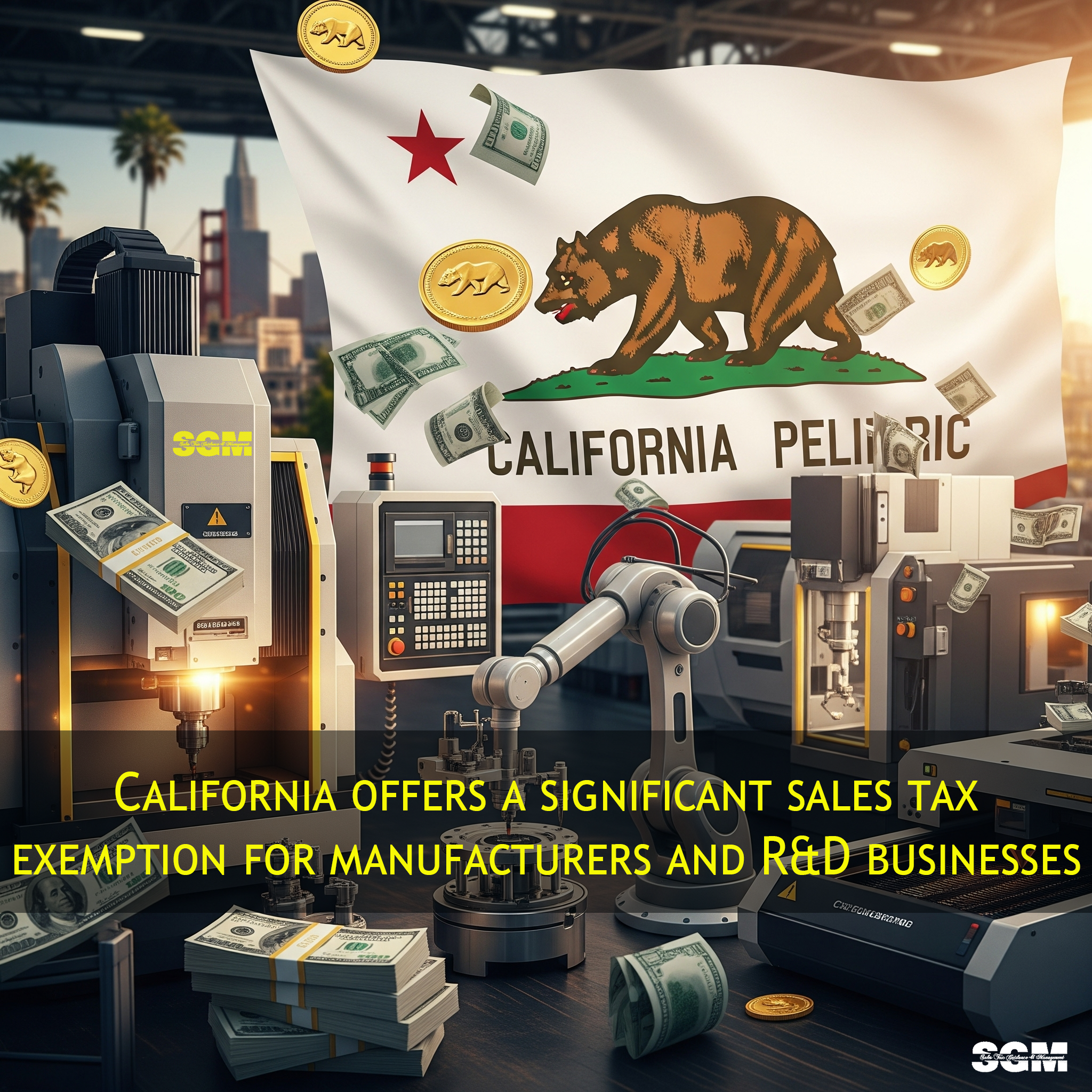Unlock Savings: A Guide to California’s Manufacturing Sales Tax Exemption
For manufacturers, every dollar saved on operating costs can be reinvested into innovation, growth, and job creation. That's why California's partial sales and use tax exemption for manufacturing and R&D equipment is a crucial incentive that businesses should not overlook. Since its inception in 2014, this program has helped countless "qualified persons" reduce their tax burden on significant capital investments.
But what exactly is this exemption, who qualifies, and how can you take advantage of it? Let's break down the details.
What is the Exemption?
The California Manufacturing Sales Tax Exemption is a program that provides a reduced sales and use tax rate on the purchase or lease of "qualified tangible personal property." This means that instead of paying the full state sales tax, qualified businesses pay a lower rate, plus any applicable district taxes. This can lead to substantial savings on large equipment purchases.
The current exemption is set to expire on June 30, 2030, so it's a great time to ensure you are maximizing its benefits.
Do You Qualify? Key Requirements
To be eligible for the exemption, your business and your purchases must meet specific criteria. Here’s a quick overview of the three main conditions:
- You must be a "Qualified Person." This means your business is primarily engaged (50% or more of revenue or operating expenses) in specific activities, including:
- Manufacturing
- Research and development (R&D) in physical and life sciences
- Certain electric power generation or distribution
- Certain agricultural businesses
- You must purchase "Qualified Property." The property you purchase or lease must have a useful life of one year or more and be valued at $5,000 or more. This includes:
- Machinery and equipment
- Component parts of equipment
- Special purpose buildings and foundations
- Tangible personal property used in pollution control
- Equipment and devices used to operate, control, or maintain the machinery
- The property must be used in a "Qualified Manner." This means the qualified property must be used primarily (more than 50% of the time) for a qualified activity, such as manufacturing, processing, refining, or R&D.
How to Claim the Exemption
Unlike some other tax programs, there is no pre-approval process or application you need to file with the state. The process is straightforward:
- Provide a certificate to the seller. When you make a qualifying purchase, you must provide the seller with a completed Partial Exemption Certificate for Manufacturing and Research & Development Equipment (CDTFA-230-M).
- The seller applies the reduced rate. Once they have the certificate, the seller will charge you the reduced tax rate on the qualifying purchase.
- Keep your records. It's essential to maintain proper documentation, including the exemption certificate, purchase records, and proof of how the equipment is used. This is crucial for compliance in case of an audit.
The Bottom Line
The California Manufacturing Sales Tax Exemption is a powerful tool for businesses looking to invest in new equipment and technology. By understanding the qualifications and documentation requirements, you can significantly reduce your tax burden and free up capital to fuel your business's growth.
For the most current information and official forms, always consult the California Department of Tax and Fee Administration (CDTFA) website.
Stay connect with SGM to ensure compliance with these new regulations.
Suggested Keywords:
California manufacturing tax exemption, CA sales tax exemption, manufacturing sales tax, R&D tax credits California, California Department of Tax and Fee Administration, CDTFA-230-M, manufacturing equipment sales tax, research and development tax, California business tax benefits, industrial machinery tax exemption, manufacturing tax incentives, California R&D equipment tax, manufacturing sales and use tax, qualifying tangible personal property, California tax law for manufacturers


